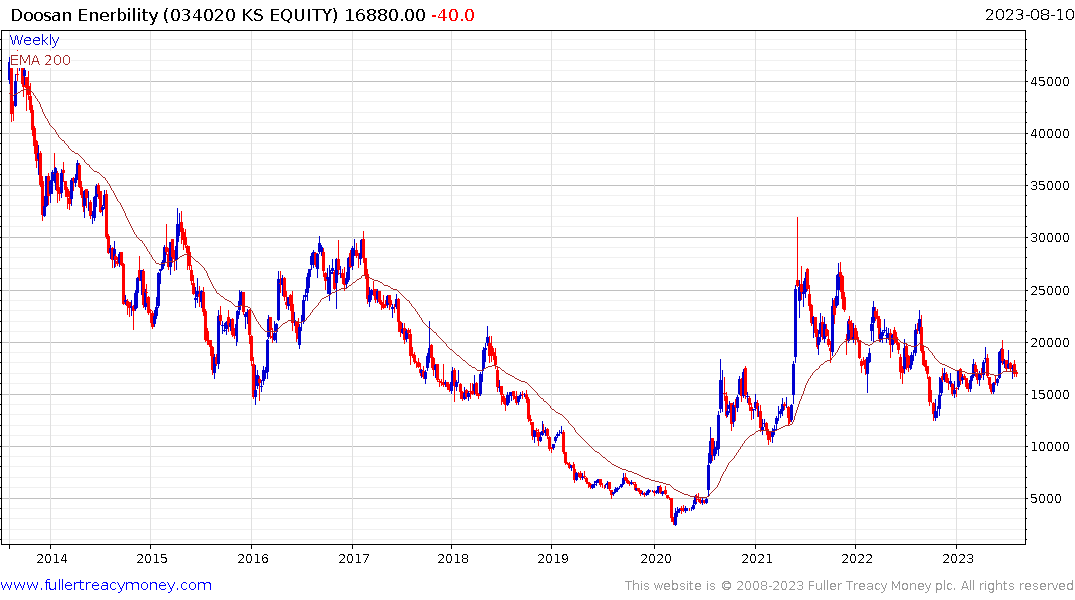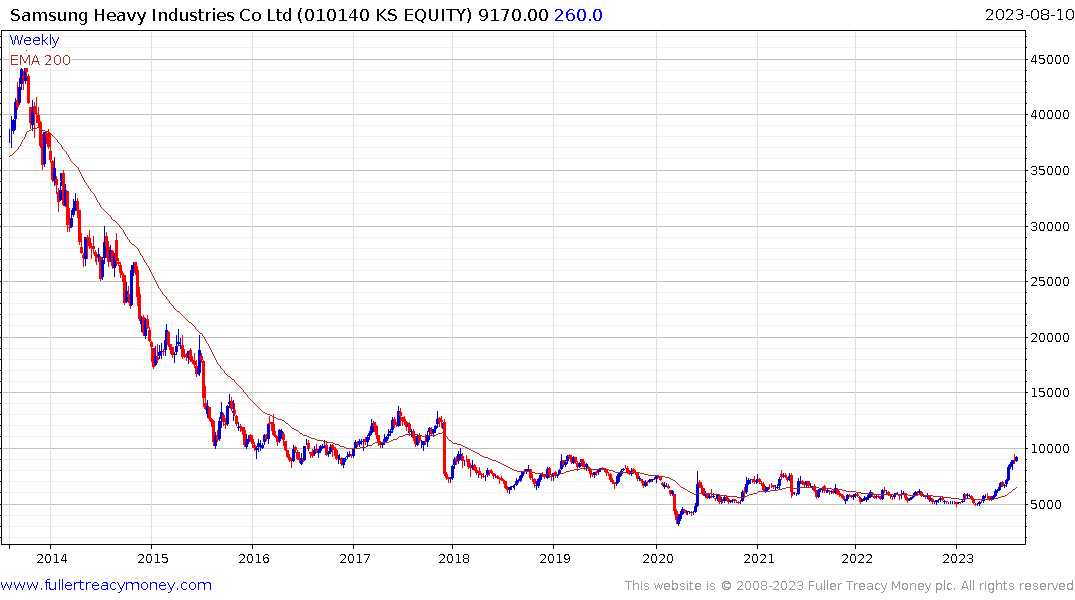Email of the day on a third industrial revolution, doing more with less and a nuclear revival from David Brown:
It was a memorable 3 days with you last week. It gave us time to discuss several things in depth, including our new industrial revolution. Thank you for capturing some of the key points in your recent writings. I gave a lengthy presentation on our new 3rd Industrial Revolution at David Fuller's Markets Now meeting in London, February 2015, and Forbes interviewed me a few weeks later. Here is an extract from the article:
"We clearly have the new communication system, the internet, and I suggest we can reasonably date the beginning of this industrial revolution to the mid 1990s when desktop PCs became linked for the first time by Tim Berners-Lee’s World Wide Web and Marc Andreesen’s Mosaic/ Netscape system. The internet is well ahead of the other two factors."
This was some years before Klaus Schwab and the World Economic Forum took up the theme. And yes, I do rank it as the 3rd, not 4th as Schwab does: the development of computer tech in the 1970s-1980s hardly constituted a revolution. It did not drive a massive increase in productivity because it lacked most of the key factors required for an industrial revolution.
Back then, we did not have the internet, the first of the 3 new factors required, and which more recently has given a massive change in communication and in distribution of information and goods. That became feasible from 1994 when Netscape appeared and especially from 2007 with the first iPhone followed by other smartphones.
However, the other two required breakthroughs are still missing today. Our new industrial revolution has stalled with just 1 of the 3 essential factors in place. Our financial system is completely unreformed and inefficient; and we have not rolled-out a viable new energy source.
In fact, in my opinion, the Western world has gone seriously off-track in the eight years since I first presented on this in 2015. You captured the issue very succinctly when wrote "The basic assumption is technological innovation allows us to do more with less". "The challenge in the energy and financial sectors is the solutions being proposed do less with more." The current direction of travel on renewable energy is worrying. In addition to the gross inefficiency, unreliability, and cost-ineffectiveness, of wind and solar power, we have the bizarre belief in shipping wood chips across the Atlantic to fuel 'green' energy in the UK. Apparently, returning to the energy source that pre-dated our 1st and 2nd revolutions constitutes progress!
I do not have much idea about the new financial system, but the new energy system is obvious and that is the topic of this note to you today, Eoin. From our discussions last week, I believe you are of the same view, and it would be good to pass this on to all subscribers of Fuller Treacy Money. I recommend this article. At last we are beginning to see writing by experts in the energy sector, real experts, with factual information. This article on nuclear power will (hopefully) be followed by many more.
Here are some key points from the article:
The only viable and scalable low-carbon power technology is nuclear. Today, more than 400 reactors generate about 10 per cent of world electricity. They are emissions free and reliable. Their only problem is that they are perceived to be dangerous and are violently opposed by some groups.
Dangerous, nuclear is not. Per unit of energy generated, nuclear power has proved to be much safer than any other major power generating technology. Coal, gas and hydropower are respectively 4000, 100 and 35 times more dangerous.
In the event of an accident where all power supply is lost, all modern reactors will shut down safely. Over the last 60 years the only nuclear powerplant accident with directly measurable health consequences has been at Chernobyl. The reactor there was operated in defiance of all safety principles and used obsolete technology without shielding: its failure has no relevance to a discussion of normal nuclear reactor safety.
Many different designs of small modular reactors which are built on a production line basis are proposed and several are now under construction. None of them can melt down and release radiation.
A rapid switch from expensive, impractical wind and solar power to reliable nuclear is the only way of meeting the net zero goal while keeping the lights on and society in general functioning.
Nuclear power needs to be recognised as a low emissions source of electricity that is superior to wind and solar power. Subsidies, mandates and other enormously expensive policies intended to promote wind and solar power must be abandoned and the money switched to expediting nuclear power.
Governments need to face the fact that wind and solar power can never deliver their net zero dreams of low cost, reliable, emissions free electricity. They have only two realistic options: switch to nuclear power, or abandon net zero.
The article is referring to current fission technology, and - as you mentioned recently - we may soon have even more powerful and efficient fusion energy to follow.
I am hoping that we are past peak nonsense about so-called 'green technologies' and that realism will begin to reassert itself. Eoin, it would be good if you can periodically update us on investment themes related to nuclear power. And let's return to the topic of what might constitute "doing more with less" in a much-needed new financial system.
Thanks and best wishes to Aisling and family. It truly was wonderful to host you last week.
Thank you for this generous email and it was very enlightening to spend several days discussing the outlook for the markets and the world. Thank also for your wonderful hospitality in hosting us at Cambridge and sharing your insights on the practical use of AI.
Energy is the most vital sector in the world and comes with vested interests we are only partially aware of. The trend of investment in renewable energy is still alive and well. Just yesterday Germany announced another investment package. The €58 billion will focus on retrofitting buildings to be more energy efficient as well as new construction, investment in new green energy projects (€12 billion) and additional money for building semiconductor factories.
The biggest challenge for nuclear energy is large political parties have made their opposition to the technology a part of their manifesto and that has been the case for decades. To turn that around both sides of the political divide will need to agree on the solution.
Some progress is being made. In the USA, for example, a bipartisan bill is making its way through Congress and aims to simplify the permitting process for generation IV reactors. It’s at least a step in the right direction.
Vestas Wind broke lower on disappointing guidance today. The company has a backlog of unprofitable orders and is dealing with both higher cost inputs and serious questions about quality. The cost of servicing warranties is an additional drag. That helps to highlight the difficulties the sector is facing in scaling solutions in an environment where real world data on turbine performance is available.
https://www.bnnbloomberg.ca/vestas-warns-wind-turbine-backlog-still-dragging-on-earnings-1.1956693#:~:text=(Bloomberg)%20%2D%2D%20Vestas%20Wind%20Systems,quality%20issue%20affecting%20the%20industry.
Voters will eventually rebel against high energy prices. However, the risk is when that happens, the timeline to build a new fleet of reactors will still be time consuming and short-term solutions will be favoured.
 The one share to monitor for signs of an uptick in reactor construction is Doosan Enerbility. The company supplies companies like TerraPower, NuScale, Brookfield Renewables/Westinghouse, Rolls Royce and Seaborg with parts and equipment to construct their reactors.
The one share to monitor for signs of an uptick in reactor construction is Doosan Enerbility. The company supplies companies like TerraPower, NuScale, Brookfield Renewables/Westinghouse, Rolls Royce and Seaborg with parts and equipment to construct their reactors.
At present the most promising small modular reactor program is Seaborg which will put reactors on barges. That avoids lengthy permitting and allows cables to be hooked up to an anchor point offshore. The first reactors are due to come online in 2026 with commercial construction in South Korean in 2028. https://www.seaborg.com/press-release-fuel-salt-mou
 Samsung Heavy Industries will be building those reactors. The share has completed a seven-year base formation and continues to extend the breakout.
Samsung Heavy Industries will be building those reactors. The share has completed a seven-year base formation and continues to extend the breakout.


